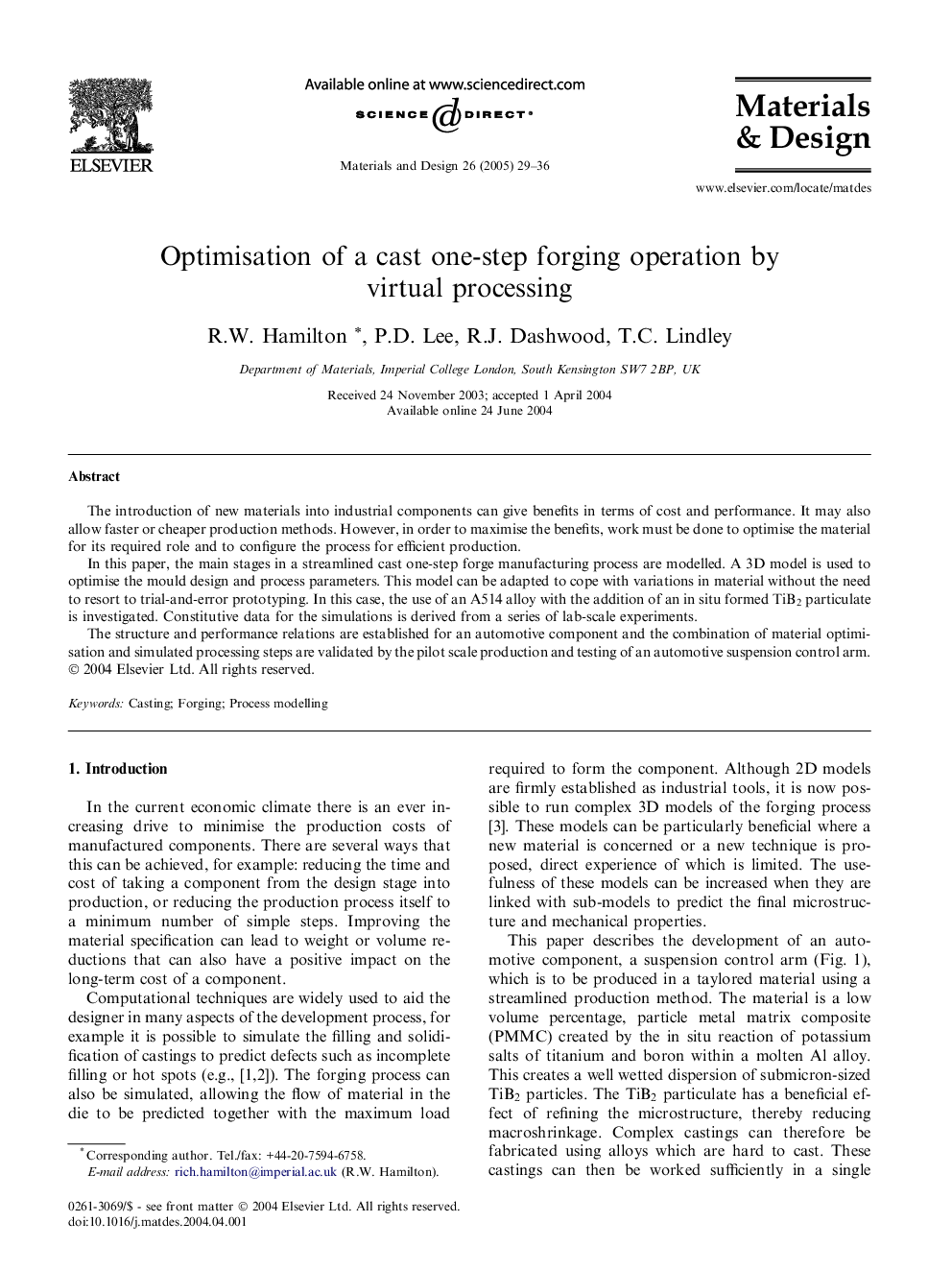| Article ID | Journal | Published Year | Pages | File Type |
|---|---|---|---|---|
| 834003 | Materials & Design (1980-2015) | 2005 | 8 Pages |
The introduction of new materials into industrial components can give benefits in terms of cost and performance. It may also allow faster or cheaper production methods. However, in order to maximise the benefits, work must be done to optimise the material for its required role and to configure the process for efficient production.In this paper, the main stages in a streamlined cast one-step forge manufacturing process are modelled. A 3D model is used to optimise the mould design and process parameters. This model can be adapted to cope with variations in material without the need to resort to trial-and-error prototyping. In this case, the use of an A514 alloy with the addition of an in situ formed TiB2 particulate is investigated. Constitutive data for the simulations is derived from a series of lab-scale experiments.The structure and performance relations are established for an automotive component and the combination of material optimisation and simulated processing steps are validated by the pilot scale production and testing of an automotive suspension control arm.
